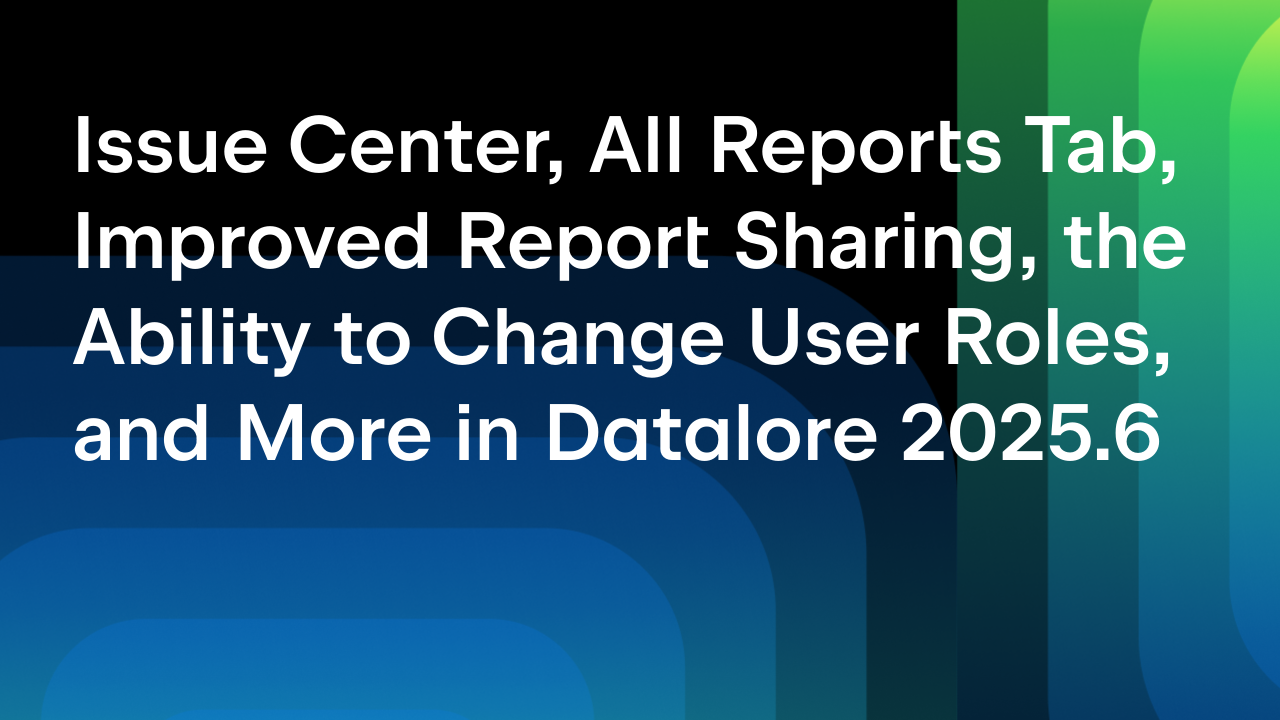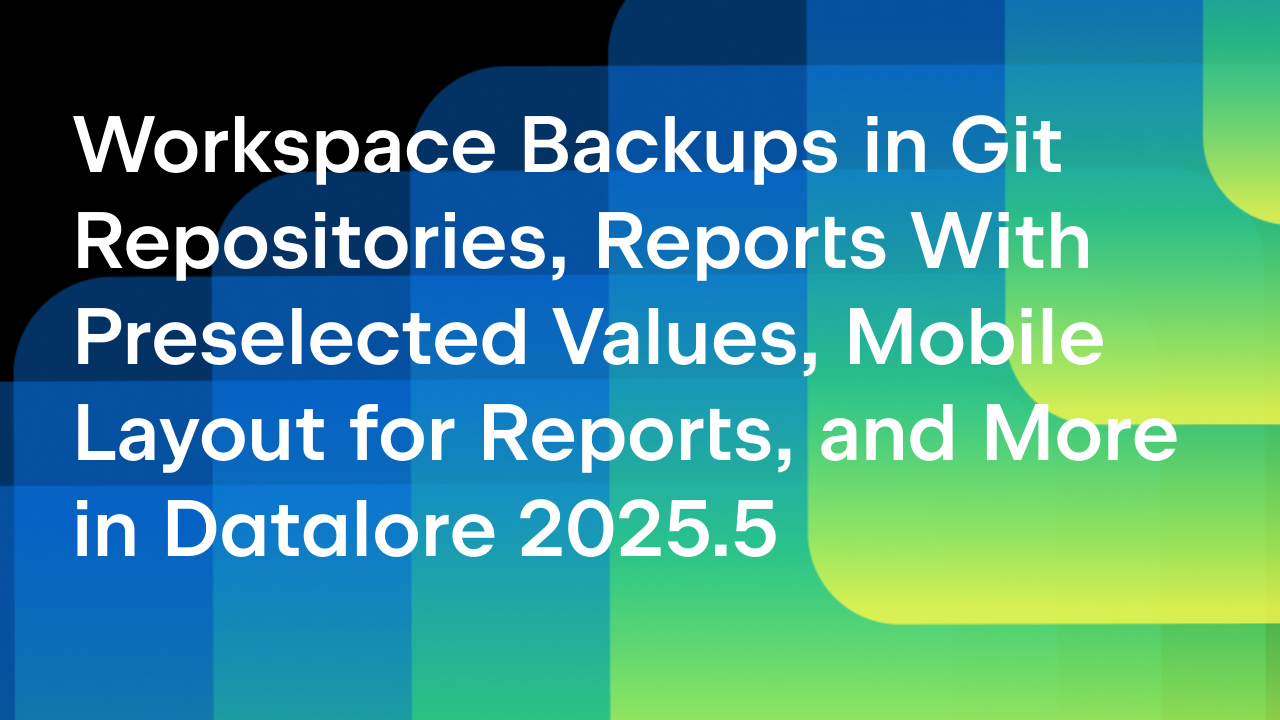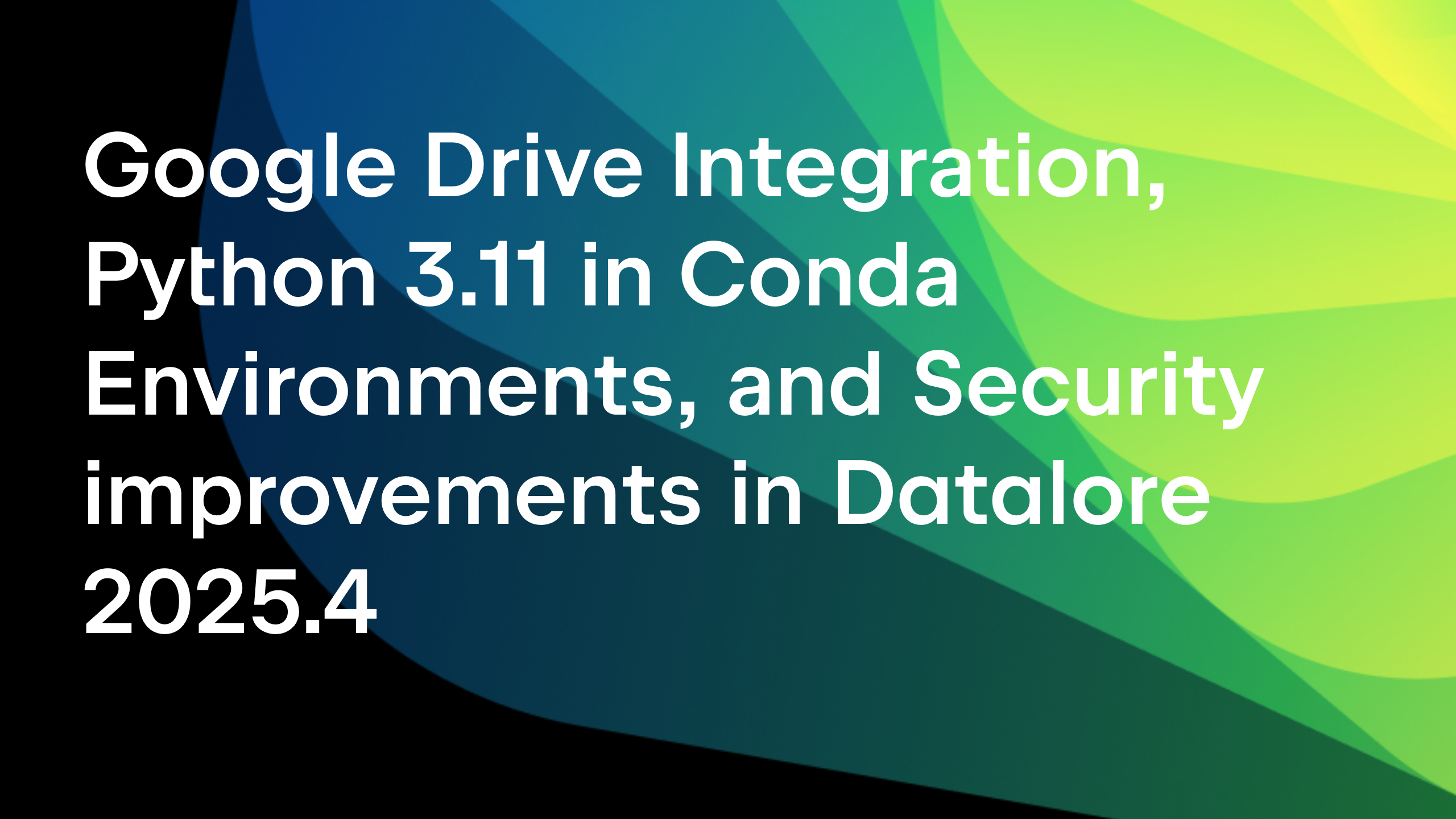Datalore
Collaborative data science platform for teams
What’s New in Datalore 2024.2: Evolution of Datalore AI, New Homepage Design, and More
The new version brings AI Assistant to on-premises installations and features the evolution of Datalore AI, a revamped homepage design, support for variables in Markdown cells, and more.
From now on, we will specify the pricing tiers for which a particular feature is available. If no tier has been specified, the feature is available across the board.
Datalore Community, Professional, and Team customers will receive these updates automatically. Datalore Enterprise customers can upgrade by following these instructions.
Introducing Autopilot and revamping Ask AI
As the next step in the evolution of Datalore AI Assistant, we are introducing Datalore Autopilot. Get advice from AI or set an explicit research goal and receive tailored suggestions for your analysis. Autopilot can analyze notebook data in your preferred language – whether Python, Kotlin, R, or Scala.


If you want to generate SQL or Markdown code, add a new cell and use the Ask AI option by clicking on the AI Assistant icon in the upper-right corner of the cell.

Additionally, you can now access the AI prompt history, making it convenient to reuse or modify previously used prompts.

Datalore AI now available for Enterprise customers
Datalore AI is now available for on-premises installations, providing AI-powered coding assistance in Python, Kotlin, SQL, R, and Scala, along with text generation in Markdown cells. Automate routine code generation and fix errors – all without context switching. Admins have full control and can choose whether to enable the feature or not. Learn more about how it works in our documentation.
New homepage for effortless navigation
We’ve redesigned the homepage to streamline your navigation through Datalore workspaces. With the new layout, it takes fewer steps to reach any critical workspace artifact – from notebooks to databases, and everything in between.

Customize your workspace with an intuitive color coding system that allows for rapid identification and selection. Recent, shared, and active notebooks are now immediately accessible, ensuring that your ongoing work is always just a click away. Additionally, the new notebook unfolding feature provides you with a quick glimpse of the associated data, streamlining your workflow without the need for deep dives into content.
Revamped UI colors
We’ve updated Datalore’s UI colors with a focus on readability and accessibility. The updated palette is slightly more vibrant while maintaining familiarity. Enjoy the new tones in the notebook editor, reports, file systems, and more.
Support for variables in Markdown cells
Embed your variables in Markdown cells with double curly brackets. Variables will dynamically convert to their live values within your text.

Get code syntax highlighting in Markdown cells
Wrap your code with triple backticks and Datalore will highlight the syntax to make it clear and easy to follow.
Migration of Git repositories and SSH keys
As part of reworking Git integration, we are deprecating the current way of attaching Git repositories to notebooks. To automatically migrate existing Git repositories to the new implementation, Datalore admins need to follow these instructions. After migrating, Git repositories will become available as workspace resources along with related SSH keys. This change provides a more flexible and secure way of working with packages available via Git repositories in Datalore.
Custom PyPI server configuration support
You can now set up custom PyPI server configurations in Datalore. This allows you to explore custom repositories via Datalore’s environment manager, extending beyond the default pypi.org server, directly facilitating package installation for users. Find more details in our documentation.
Improvements and bug fixes
- We now support connections to Snowflake using Azure OAuth 2.0 authentication.
- We have added the ability to connect to Microsoft SQL Server using native Windows authentication and authorization.
- When publishing a report, you can now choose if you want to let others make and download copies of the associated notebook.
- Datalore Enterprise admins can now configure the permitted size for imported notebooks.
- Datalore Enterprise admins can now limit the number of GPUs connected to an agent.
- Datalore Enterprise admins will now be able to receive warnings about user storage running out of space. Find more info in our documentation.
- It is now possible to see reports linked to each notebook within the workspace view.
- We fixed the bug preventing SVG files from properly rendering in Markdown cells.
- We resolved the inconsistency with MultiIndex DataFrames rendering in code cell outputs.
- We corrected the issue with the last row of the DataFrame not appending correctly to existing tables via the Export to database cell.
- We fixed the scrolling error that occurred when using ⌘F to find a code cell within the notebook.
- It is now possible to access a database from a running notebook without pre-entering the database login credentials. After logging in, you can use the database for the duration of your session without saving the login details permanently.
- As part of the migration from secrets to environment variables, we’ve deprecated adding new secrets to an environment.
- We fixed a bug that prevented notebook owners from setting up email notifications for collaborators on scheduled runs.
- We updated the Lets-Plot version from 4.2.0 to 4.3.0.
Datalore Community, Professional, and Team customers will receive these updates automatically. Datalore Enterprise customers can upgrade by following these instructions:
Kind regards,
The Datalore team
Subscribe to Datalore News and Updates





